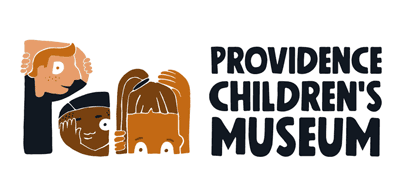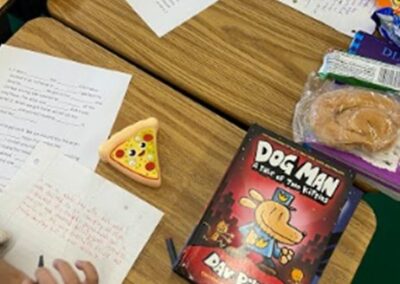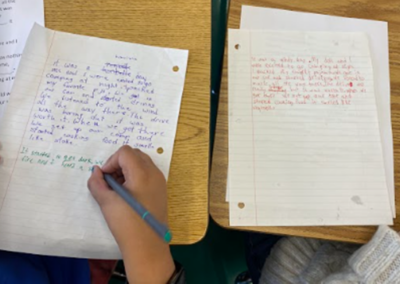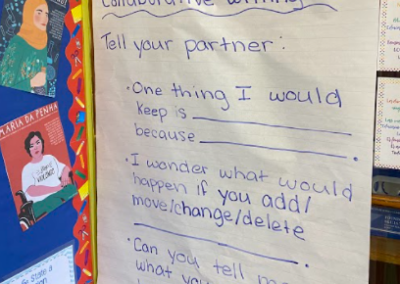Writing Roulette
Developed by Alice Briney-Rockswold, Playful Practicum 2022
(FOCUS: Grades 3, 4 and 5, ELA, shared writing)
Engage students in a collaborative and creative writing process that builds stamina and reinforces craft. Taking turns, three pairs of students will respond to a story starter. Each pair has a role in the creation of a common group narrative.
This lesson targets story elements and structure, but Writing Roulette can be used for expository or opinion writing as well.
Materials to gather
- Paper
- Pencils
- Timer
- OPTIONAL: Allow students to write their own story starters and create a Writing Roulette Wheel. The wheel can include written prompts or pictures to guide student thinking
Set Up:
Choose a prompt in advance for students to respond to or have students spin the Writing Roulette Wheel.
Three pairs of students form a group. Pair students heterogeneously to support struggling or reluctant writers with peer language models. Assign each pair a letter (Pair A, Pair B, Pair C).
Student’s Job
- Set the timer for 7 minutes. Each pair writes the first scene of a story. During the first round of writing, pairs should set the scene for their narrative by introducing the characters and setting. After 10 minutes, Pair A passes their writing to Pair B, Pair B passes to Pair C, and Pair C passes to Pair A.
- Set the timer again for 10 minutes. Pairs read what the first pair has written and continue the story by introducing a problem or conflict. After 7 minutes, the paris pass their writing for the second time.
- Pairs read Part 1 and Part 2 of the story and write a resolution. After 10 minutes the writing is passed to the original writers, who read the completed work.
Encourage students to share their group’s writing by reading or acting out their stories.
Further Challenges:
Select a word list. Words can be previously taught CVC words (K-2) or content specific academic vocabulary (3-5). Pre-teach or review the words, if necessary. Show students the list of words. Ask students to work in pairs to write a story, using the words in the order they appear on the list.
When students read and/or act out their stories, have the others monitor to see that the words have been used in order.
The class can discuss the meanings of the words used – were the meanings different from the meanings students originally learned?
Teacher’s Job
To review, students can act out examples of the 7 Types of Narrative Conflict (below) in short improv skits. Assign a type and let a pair of students begin the scene. Call out “freeze” and have another pair jump in to complete the scene. Repeat with other types of narrative conflict.
The students watching should be guessing the type as the scene plays out.
- Person vs. Self…
- Person vs. Person…
- Person vs. Society…
- Person vs. Nature…
- Person vs. Supernatural…
- Person vs. Technology…
- Person vs. Fate…
Standards Alignment
CCSS.ELA-LITERACY.W.3.3, CCSS.ELA-LITERACY.W.4.3, CCSS.ELA-LITERACY.W.5.3
Write narratives to develop real or imagined experiences or events using effective technique, descriptive details, and clear event sequences.
CCSS.ELA-LITERACY.W.3.10, CCSS.ELA-LITERACY.W.4.10, CCSS.ELA-LITERACY.W.5.10
Write routinely over extended time frames (time for research, reflection, and revision) and shorter time frames (a single sitting or a day or two) for a range of discipline-specific tasks, purposes, and audiences.
Connections to Previous Work
When introducing Writing Roulette for the first time, have students write about something that is familiar to them (i.e. connects to previous learning or personal experience).
Prepare/ Background Info
Activate students’ background knowledge on the prompt’s topic prior to writing (KWL, Back to Back, Turn and Talk).
Pre Teach any unfamiliar vocabulary included in the word list.
Effective Facilitation Strategies
Have each pair use a different color marker or pen while writing. This way you know who wrote what scene in each story.
While students are writing, actively monitor the groups. Facilitate generation of ideas by asking open ended questions and encouraging student to student discourse.
Play to Notice
Allow students to act out their scene in the story prior to writing it down. This may require extra time between rounds. Encourage students to use gestures and expressive voices while acting.
Content Matter to Notice
Look for evidence of story elements and story structure in student writing.
Assess writing against your grade level rubric for narrative writing.
After groups act out their stories, the class can discuss the meanings of the words used – were the meanings different from the meanings students originally learned?
SEL to Notice
Pay attention to students’ ability to communicate effectively with one another to co-construct a cohesive narrative. Consider providing groups with sentence starters to discuss their writing process:






0 Comments